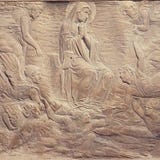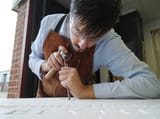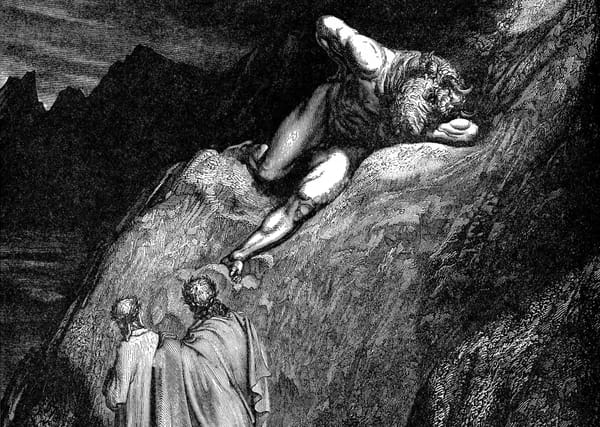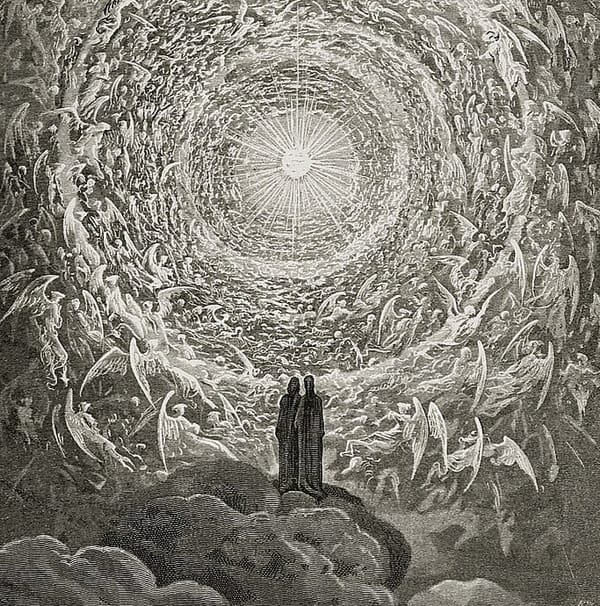Chisel marble and more, with Donatello!
A once in a lifetime exhibition, to explore the master of the Italian Renaissance as if you you were in his workshop!
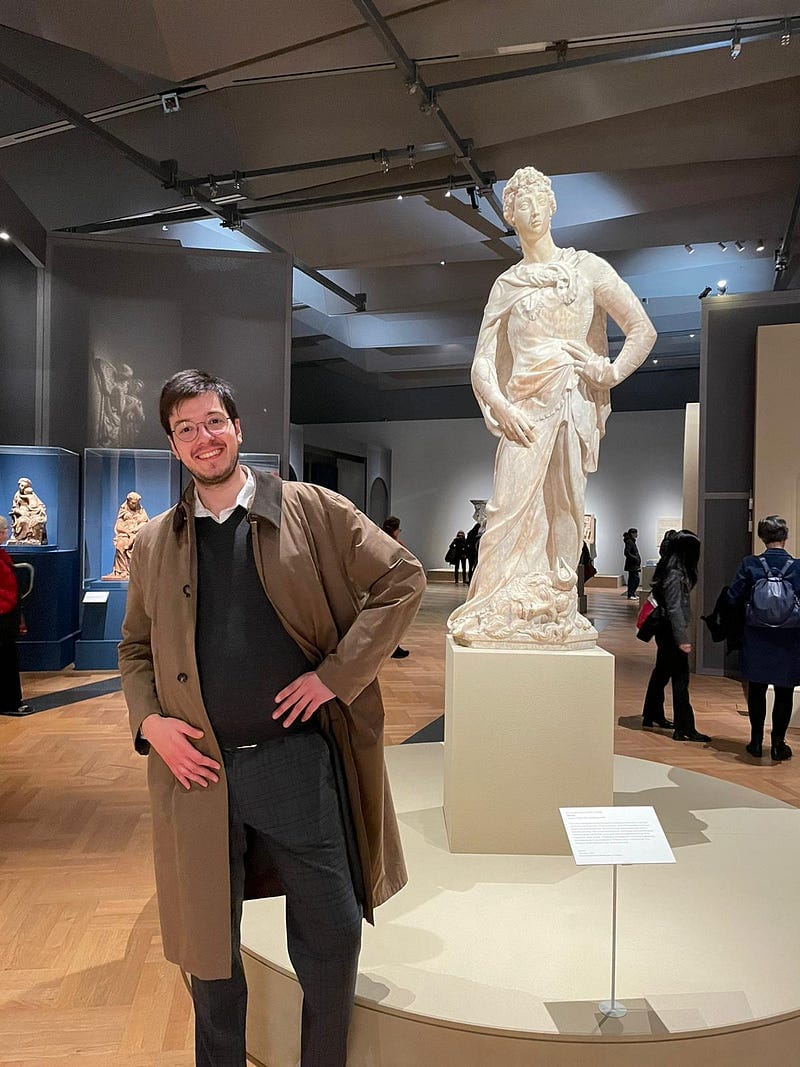
A once-in-a-lifetime exhibition, to explore the master of the Italian Renaissance as if you were in his workshop!
Hey, folks! If you’re in London, you absolutely have to check out the Donatello exhibition at the V&A Museum. It’s an incredible collection of over 100 works by one of the greatest artists of the Italian Renaissance, closing on Sunday 11th of June, let’s explore it together!
A young apprentice
Donatello was one of the most important artists of the Italian Renaissance, and his work had a profound influence on the art and culture of his time. Born in Florence in the 1380s, he began working as a sculptor at a young age and quickly gained a reputation as one of the most talented artists of his generation.
The early life is somewhat shrouded in mystery, but we do know that he was born into a family of craftsmen and began working in his father’s workshop at a young age. It’s likely that he learned his craft through an apprenticeship in goldsmithing and then with a master sculptor (Lorenzo Ghilberti), as was common at the time.
In his early twenties, he was commissioned to carve a marble statue of David (Picture above) in 1408, to be placed on the tribune of the dome at one of the buttresses on the north side of Florence Cathedral. Nanni di Banco was assigned to carve an equal statue of Isaiah.
The impressive statue moves away from the static gothic statues canon, exhibiting an elegant contrapposto and surely a sway that derives from his teacher “Lorenzo Ghilberti”.
The Technique
Even though this statue and others are quite impressive to the eye, his signature technique will become another one, and I’m talking about the “Stiacciato”.
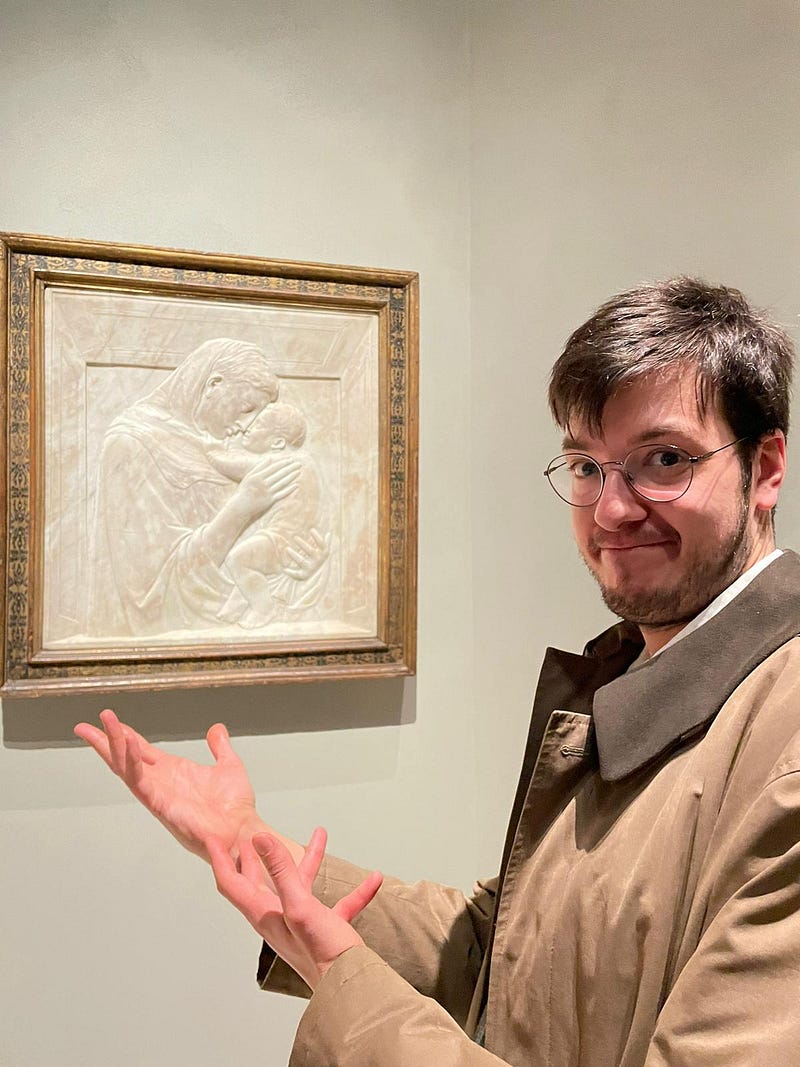
Stiacciato is an extremely subtle type of relief, the illusion of depth is carefully planned by design, and figures are no more carved but seem painted on marble.
You can view it in this picture above, it is a “Madonna and the child”, produced originally for private devotion in the Palazzo Pazzi della Congiura in Florence at the beginning of Donatello’s collaboration with Michelozzo. The work was extremely popular and is known in several copies.
It is a technique quite unique to him and many (including Michelangelo) tried to copy it somewhat successfully, but not to the same degree (see Madonna of the Stairs here).
This type of carving, being so short of depth is quite susceptible to the lighting involved, in the creation phase and in the installation too.
You can see how in this relief below.
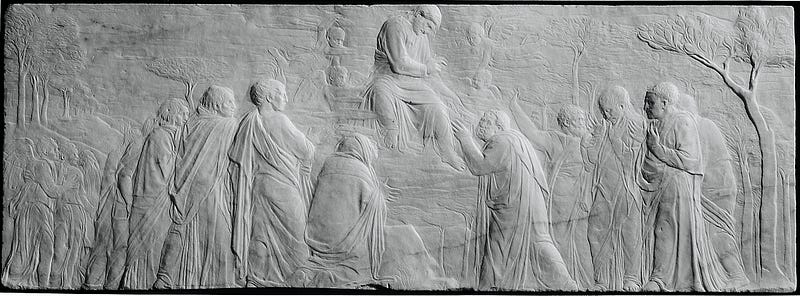
It is an unusual subject, combining the Ascension of Christ and Christ’s giving the keys of the kingdom to Saint Peter. As you can see the light coming from the top right is key in order to be able to view all the figures. If not they would just look like a drawing on the marble and the three-dimensional effect would not appear.
Now I’m sure you would ask, did Donatello do other things other than marble? Of course, he did, he was well versed like many artisans of his time in goldsmith techniques like forging, melting, casting, beating and embossing.
Many artists of this time moved from metalworking to other types of art, as it requires high precision and covers a lot of areas that come useful in other branches of art like clay modelling, wax and preparatory sketches.
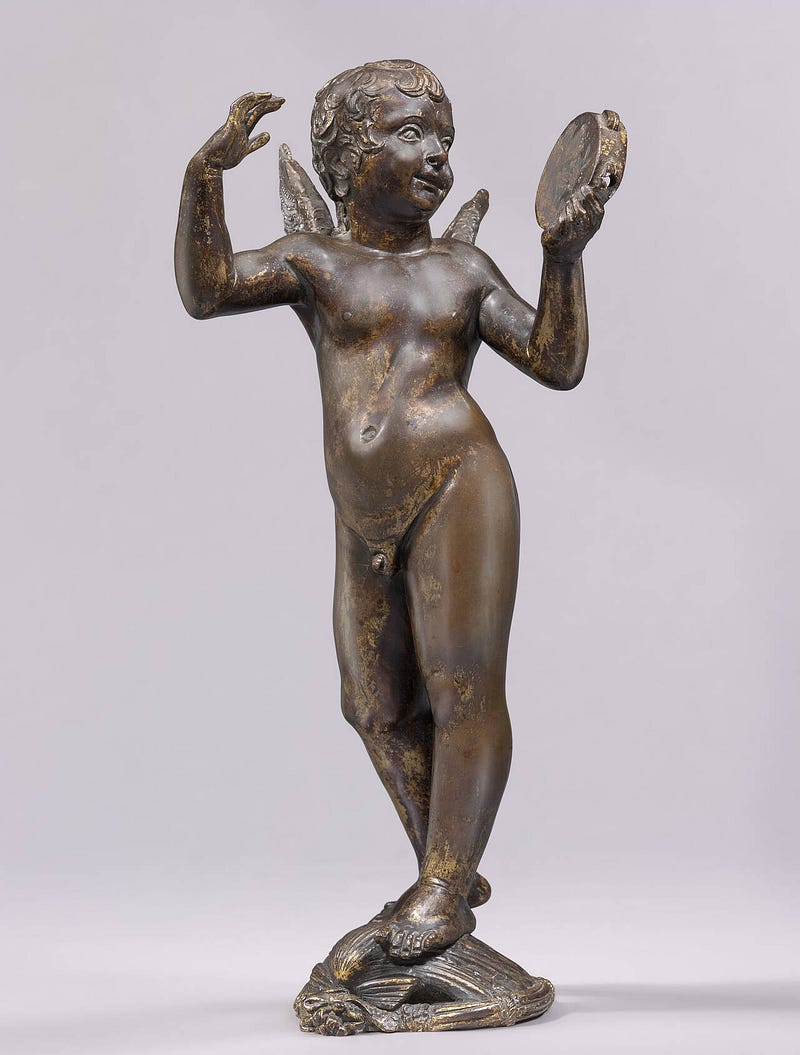
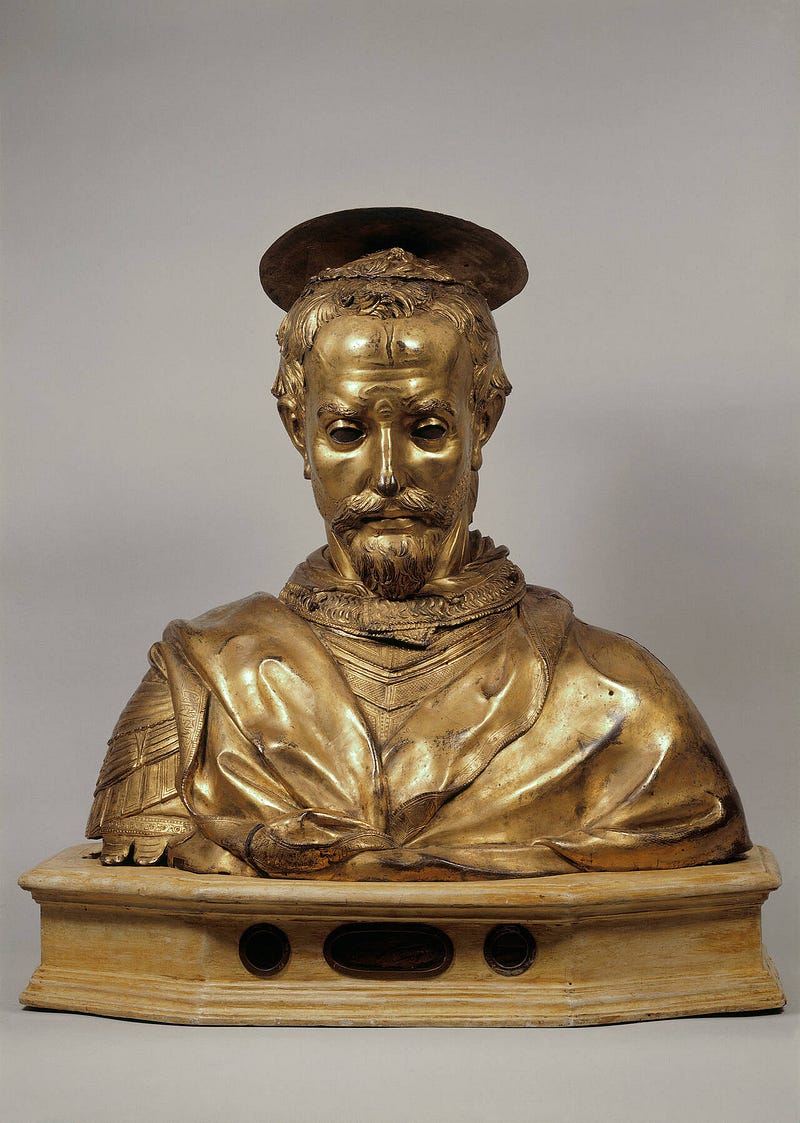
As you can see in the two pictures above we have 2 great examples of how metal (bronze) is malleable and be used to create beautiful statues.
In the first picture, we have a “spiritello” a little winged figure that Donatello liked to put at the centre of his imagination quite often. Sometimes as decorative pieces or also as functional pieces like in fountains.
The second picture is The San Rossore Reliquary, a 1424–1427 gilded bronze sculpture commissioned by the monks of Ognissanti, Florence.
This work is quite different from the previous production of reliquaries done in the past. In the sense that this is more realistic, less ideal and closer to a “Roman Bust”. The fusion was supervised by Jacopo degli Stroza and saw the creation of five single parts, cold assembled.
Also in this work Donatello used corrections linked to the observer’s point of view: the saint looks down because his original location was high up, where he could not be stolen.
Many of Donatello’s works are made in collaboration with other studios or artisans and we need to appreciate their creative process and experimentation. This will become the foundation of future generations of artists like Michelangelo, Bernini and more.
All of this and more are viewable at this exhibition, and I strongly recommend you to buy also the exhibition book. It is quite dense and packed with history and truly embellishes the Renaissance period.
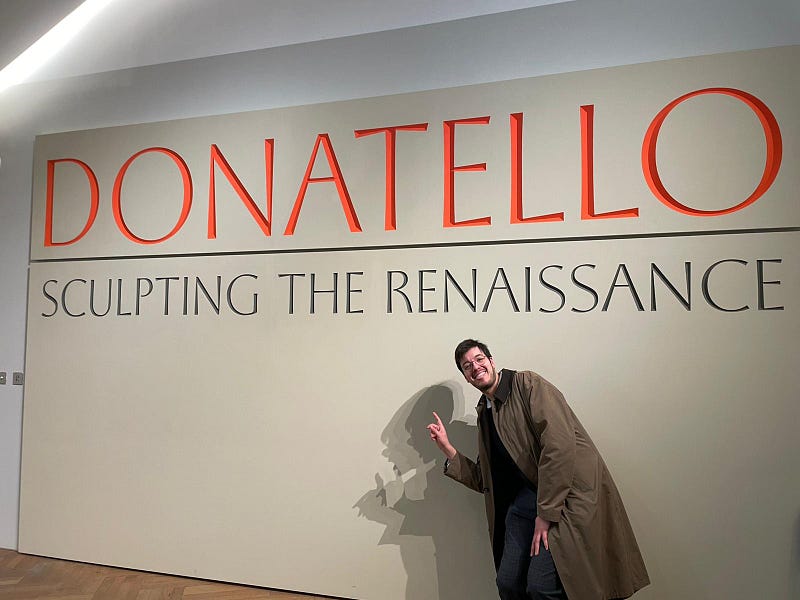
I hope you enjoyed this short read and I strongly recommend you to visit the rest of the V&A museum. In particular, the Weston Cast Court, of which I wrote an article here.
Also if by any chance you find yourself in Naples, make sure to go to “Spaccanapoli” as Donatello left one of his works in the church of Sant’Angelo a Nilo, quite an impressive example of “Stiacciato” explained above.
Surely he must’ve taken some inspiration from the basilica of S.Lorenzo, of which I talked about here.
Find some useful links down here, and if you liked the article please consider to like and follow, helps a lot!
See you next, bye-bye!
Useful Links:
V&A Museum site
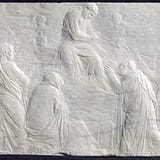
Lorenzo Ghilberti’s Britannica Page
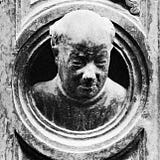
Madonna of the stairs by Michelangelo
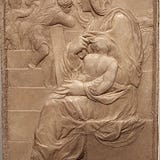
Donatello’s work in Naples
